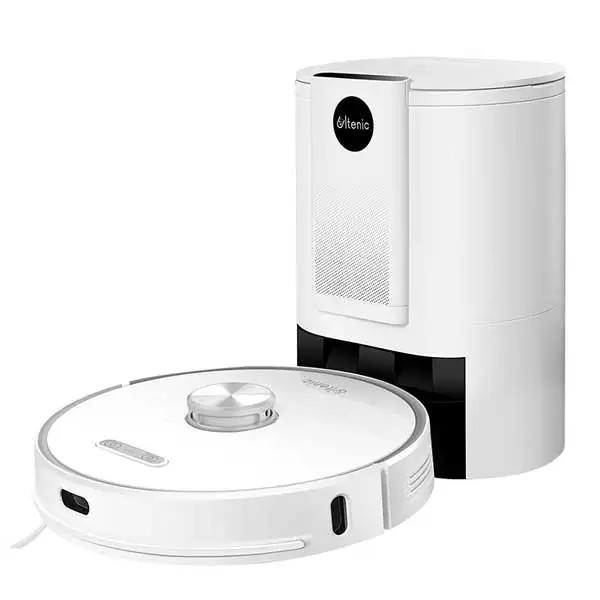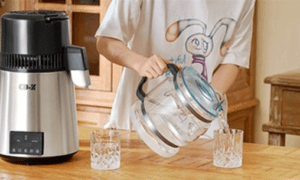Robot vacuum cleaners are a state-of-the-art and convenient solution to cleaning your home, which helps keep your rooms clean without much effort. Equipped with state-of-the-art technology, they offer features such as automatic route planning, various cleaning modes and the ability to deal with a variety of flooring, including parquet flooring, tiles and even carpets.
Many models are equipped with sensors to avoid obstacles and ensure effective cleaning even in hard-to-reach areas. Additionally, some robots are able to sync with smartphone apps, which allow them to be remotely controlled or scheduled for cleaning at specific times.
The robot vacuum cleaner is an automated device that specializes in floor cleaning using a variety of modes and technologies. These devices work independently, effectively removing dust, dirt and even the smallest debris from various flooring such as parquet, tile or carpet. They can offer features like self-cleaning stations and automatically emptying a dust tank, which makes it much easier to clean up your home.
Robots use sensors such as gyroscopic navigation or camera systems to orient themselves in space, identify obstacles and choose the optimal cleaning route. The dust collection uses high-powered motors that have a wide range (between 1400 and 22,000 PA), providing deep cleaning of different surfaces. They are able to adapt to the particular cover, for example by increasing capacity on carpets or reducing it on hard floors.
Robot vacuums have become an indispensable household assistant, offering efficiencies and amenities that greatly improve the quality of daily life. With advanced features and customizable capabilities, they are ideal for a variety of needs.
Save time and energy
Robot vacuums automatically perform cleaning, allowing you to focus on more important things. They operate autonomously, using sensors and algorithms to accurately map space and avoid obstacles. For example, models with 150-250 minutes of working time can clean up even vast spaces up to 250 m ². Exercise is minimised as the robot does the work for you, even accessing hard-to-reach areas.
Regular and efficient cleaning
Frequent robot cleaning helps maintain air quality and reduces dust accumulation. As well as sucking, the smartest models wash and dry their mops, providing a consistent and hygienic result. Self-cleaning docking stations and heated drying achieve extra cleanliness.
Cleaning hard-to-reach areas
Robots are able to access narrow areas, such as under furniture or in corners. Their up to 20 mm mope lifting feature is especially useful for carpet cleaning. In addition, robots adapt to changes such as moving furniture, providing a perfect result.
Dishwashers have become an essential household element that not only makes everyday easier, but also improves hygiene. They are capable of washing dishes at 70 °C, providing a higher purity level than is possible with hand washing. It is important to understand the impact of different types and functions on the efficiency of household work and resource consumption in order to choose the most appropriate one.
Built-in and free-standing machines
The fitted dishwashers fit harmoniously into the kitchen design as they are fully integrated into the furniture. They are suitable for smaller spaces where aesthetics and space economy are important. Freestanding models, on the other hand, offer more flexibility and are easier to move around. The layout of the room becomes an essential factor – compact built-in models are recommended for small kitchens, but larger houses are supported by freestanding models with more capacity.
Water consumption and environmental impact
Dishwashers are designed to use optimum amounts of water, often less than when handwashed. This not only reduces water consumption but also reduces negative environmental impacts. Models with self-cleaning stations and steam washing provide additional efficiency and hygiene.
A steam cleaner is a device that uses water vapor to effectively clear different surfaces and remove dirt, fat or bacteria. Such devices offer an environmentally friendly alternative to traditional cleaners as they rely on a combination of heat and pressure rather than chemicals. As well as cleaning, steam cleaners disinfect them, making them ideal for households where hygiene and safety are important.
Steam cleaning principle
Steam is created by heating water to high temperatures, often above 100 °C. in the process, steam becomes a powerful tool capable of penetrating microscopic gaps and removing dirt, fat and even bacteria. The high temperatures destroy microorganisms, which often go unnoticed on surfaces. For example, a steam cleaner can effectively clear tile stitches where traditional features can’t reach.
In addition, steam cleaners are safe for use on a variety of surfaces, such as ceramics, glass or even fabrics. Adjustable vapour pressure allows the cleaning to be adjusted for each material, thus avoiding damage.
Application of steam cleaners
These devices are versatile and suitable for cleaning floors, windows, bathroom, kitchen and even soft furnishings. Steam cleaners, for example, can help restore mattresses or curtains by removing dust and allergens. In addition, they are great for households with children or pets, improving hygiene without the use of chemicals.
Advantages over chemistry
Steam cleaning is environmentally friendly because it reduces the use and emissions of chemicals. As well as ensuring cleanliness, it also prevents the accumulation of chemical residues on surfaces. For example, children’s playgrounds or pet beds can be cleaned safely without worrying about harmful substances.
Take a look at our e-store deals and buy the right device for your home!



































